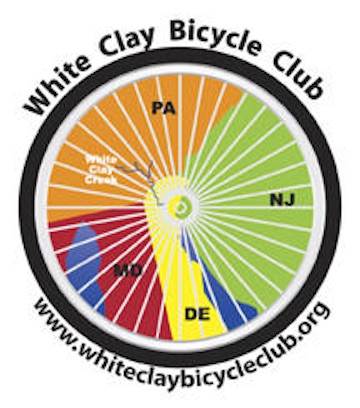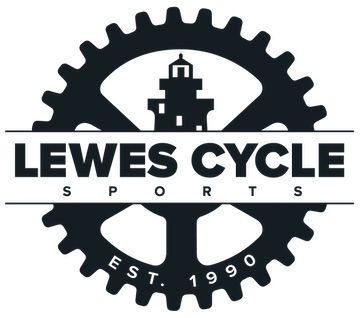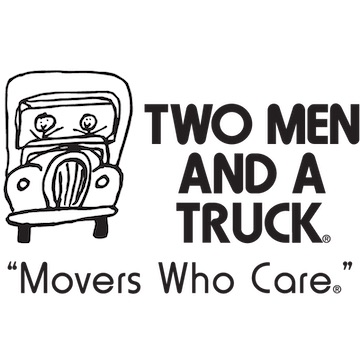How the Dutch Handle the Right Turn Only Lane Problem
A Bike Delaware Working Group will meet this Thursday, April 14 to discuss the challenge that right turn only lanes present for bicycle users. A lot of discussion will reference the idea of a “combined” bike lane/right turn lane (a type of “pocket” bike lane, for when roadway width is constrained) as seen, for example, in the Maryland MUTCD and in the National Association of City Transportation Officials Bikeway Design Guide.
The combined bike lane / right turn lane approach to the right turn only lane problem has the very great merit of being, basically, free. It is a painted road marking that requires no roadway reconstruction whatsoever and can be applied for no additional cost as part of routine pave and rehab maintenance operations. In an American context, it qualifies as innovative. From the Dutch perspective, however, the “pocket” bike lane design (whether “combined” or not) appears outdated, at best, and unsafe, at worst. Since the Dutch have the highest bicycle mode share in the world, and have been designing and experimenting with cycling-specific infrastructure for decades, it may be worth checking out how they handle the right turn only lane problem (VIDEO):









4 Responses
The difference there is cars must stop before turning right. In Delaware, cars continue into a high speed right turn radius, with only a yield to worry about.
Unfortunately, this would be an expensive retrofit, and viewed as compromising motor vehicle LOS.
Speed limits "compromise" motor vehicle LOS, too. But they are viewed as necessary for safety.
Safety trumps LOS. Perhaps that principle needs to be written into law?
I heartily support the proposed work of adding pocket bike lanes to current right-turn-only lanes in Wilmington. I often commute to work and go through the intersection of Marsh and Harvey. This is a classic example of a death-trap situation for a cyclist who attempts to make a right turn headed north on Marsh. At rush hour, morning and evening, cars line up in the left lane to go straight. Often, the lead car wants to make a left turn and has to wait for an opening in traffic. Instead of doing the legal thing and waiting behind the lead car, most cars swerve into the right lane and then proceed illegally through the intersection going straight from the right-turn-only lane. Woe be the cyclist who is occupying the right lane, since most people neither check their blind spot nor signal as they whip out into the right-turn-only lane. I've been almost broad-sided multiple times in this situation and I haven't come up with a good remedy. Having a pocket lane may help with this situation.
I've also noticed that as a driver attempting to make a left turn at this same intersection, I run into a separate dangerous situation since I now have to assume that cars will be coming at me from the oncoming right-turn-only lane as they also whip out and go straight through the intersection. This makes it difficult to make a left turn if the oncoming car is also attempting to make their own left turn.
A better solution for this intersection in particular would be to just widen the lanes.
I think there has been a problem in the past with this idea because one of the corners is an historical building so the curb cannot be moved (?).
Regards,
Chris Junk
Before I start I'll say I really don't know what the right answer is.
Personally I'm not so much a fan of the pocket lane. It isn't because I think cyclists should always ride the lane or that street markings are a bad idea. I think the main reason is that these markings give the unexperienced rider a false sense of safety.
As mentioned in the video lanes like the proposed pocket lane are not actually safer (i admit I have no data to backup this comment). The one advantage I do see is that they give guidance to the cyclists and the cars as to where the cars and where the cyclists should exist. This guidance is welcome to all road users.
The problem becomes the newer cyclist (and even tired experienced ones) will now just blindly pedal into the pocket lane thinking that is is a protected relatively safe haven. In reality as you get near intersections car traffic typically doesn't respect shoulders, bike lanes, starts of turn lanes, etc. Just this morning I had a car zoom past at the last minute to dodge in front of me while I was turning right in a right hand only lane. He had to slam his brakes on to stop in front of the red light. It was ridiculous, but I was aware it was going to happen and was prepared. If this was a bike lane I was following, I probably would not have been paying as much attention.
So therefore I commend the Dutch on taking an innovative approach to re-designing intersections to work with multiple modes of transportation. I have ridden bike infrastructure in Amsterdam, but I haven't ridden this type before. I do admit is does take some getting used too as compared to riding here in the US.
Again I don't know what the right thing is. This could be a good thing or it could not. Either way I support Bike DE in their efforts to work with DOT and to push DOT to help solve a problem for cyclists, even if I don't personally agree. We must keep trying, otherwise we will never get anywhere.